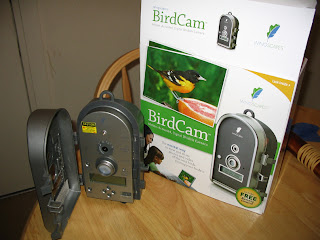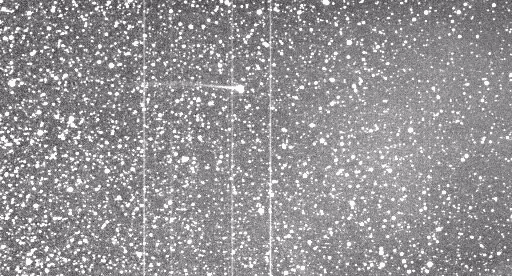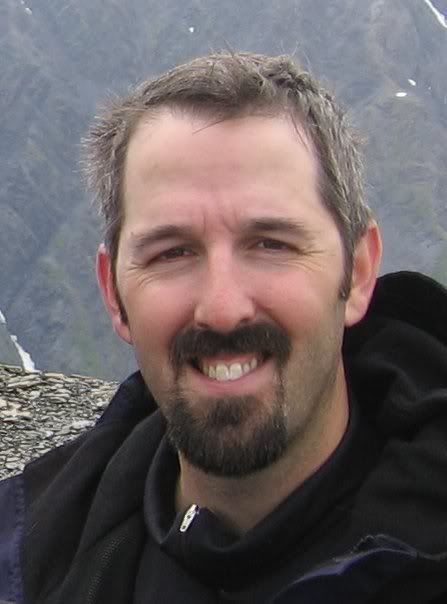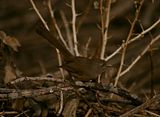
Ok, so this post isn't really going to be about
Francisco Vásquez de Coronado. It's about my trip to the site where he may (or may not) have crossed into what is now the U.S. in his expedition to find the fabled "Cities of Gold."
Coronado National Memorial is located in the far southeastern corner of Arizona, and shares a 15 mile border with Mexico. It's a really cool little park that interprets the expedition undertaken in the year 1540 by 335 Spanish
Conquistadors, four Franciscan monks, and 1,100 Indian "allies" into the heart of North America.

Even though I was there on business I found time to explore a bit and have a little fun. That's a painting of Vásquez behind me. For me, one of the most exciting things about visiting extreme southeastern Arizona is the amazing variety of typically Mexican species of birds. In many cases, this is the only spot in the US where these birds can be seen. Coronado National Memorial sits on the southern end of the
Huachuca Mountains, part of a series of mountain ranges called the "
Sky Islands" that provides a unique habitat for these birds.
But there is another, equally fascinating (but much sadder) issue that smacks you in the face during a visit to the park.

The Mexican border. I got to ride with one of Coronado's law enforcement rangers to view the border fence. Having crossed back and forth into Canada dozens of times, there's a certain amount of almost laughable formality to our northern border. In most places the only thing standing in the way of someone who wants to go to Canada is a wide swath cut through the forest, and perhaps a single cement post marking the two sides. This border, however, stands in stark contrast to what all my liberal ideas of what an international border should be. It's utterly depressing in and of itself, but when you throw in the constant presence of border patrol vehicles and the towers outfitted with thermal cameras it becomes downright threatening and, in my opinion, anti-American.
We had an interesting conversation about the evolution of the concept of immigration in this country over the past 250 years. It seems that, since before we became a nation, Americans have had this "Us and Them" mentality with regards to who the "good" and "bad" immigrants are. In the mid-19th century, it was the Irish. Then, during World War I, the Germans. During World War II it was the Japanese (they were easier to tell apart than the Germans). Now it's Hispanics, but Mexicans in particular. Our language has changed, too. Instead of referring to them as people, we now try to dehumanize anyone entering our country illegally by calling them "aliens." Scary word, huh?
Anyway, standing next to the border, and talking with a "Federale" who spends every day patrolling the border within the park, the complexity of the immigration issue sort of smacks you in the face. I must admit I was tempted to try to "illegally immigrate" to Mexico, just to see what would happen. In the end, I decided sticking my arm through the fence would have to be enough of a statement.
Ok, back to the more funner stuff. I'm sure it comes as no surprise to learn that I took advantage of my time in a cool place to take lots of pictures. Here are some of the better ones. I'm happy to report that I am feeling more and more comfortable using my camera, and I really think it's beginning to show with the pictures I'm taking. For instance, I learned to put more effort into concentrating on adjusting the aperature rather than the shutter speed. So here are some of the better images from the last two days.

This javelina limped up to the pond behind the visitor center on Friday afternoon. She hung out there several hours, but we never could figure out how badly she was injured.

I was excited to see more Phainopepla buzzing around. They've been gone for about a month now from our backyard. I like the contrast in this picture, and the narrow depth of field gives it some nice perspective.

Gila Woodpecker perched on the stem of a century plant.
 Loggerhead Shrike
Loggerhead Shrike
The last time we visited the Huachucas Sonja and I left with ten new lifers each. This time, I got one. But it was "the one" I was hoping for...
 Montezuma Quail
Montezuma Quail! I spotted
the male along the side of the road just after sunrise on Saturday morning. He quickly ran back into the weeds before I could get my camera out, but then a female popped out for a minute. Just enough time to get two pictures of her, only one of which came out. Out of all the "Mexican" species that you can see in this part of Arizona, this one is probably one of the hardest ones to spot. They tend to be very shy and don't stick around long if they think someone is in the area. This is also one of the only places in the country where you stand a half-way decent chance of spotting one.
On my way home I stopped by the west unit of Saguaro National Park, outside of Tuscon. I arrived just in time for sunset and was able to capture some neat pictures of the saguaro and some of the birds along one of the shorter trails.

Norther Mockingbird on an ocotillo.

Western Flycatcher (I think?)

Black-throated Sparrow

Sunset in Saguaro National Park.
 Well, great pumpkinS, actually. We visited an actual pumpkin patch over in Prescott to select our Halloween pumpkins this year. I think this is the very first time I've ever been to an actual pumpkin patch...at least for the purpose of buying a pumpkin, anyway.
Well, great pumpkinS, actually. We visited an actual pumpkin patch over in Prescott to select our Halloween pumpkins this year. I think this is the very first time I've ever been to an actual pumpkin patch...at least for the purpose of buying a pumpkin, anyway. We eventually found three that called our names (we couldn't decide on just two). Unfortunately, living in a park with only one neighbor means that decorating the house for different holidays is pretty much for our eyes only. Not that this is going to prevent me from coming up with a really cool design for carving my pumpkin, of course.
We eventually found three that called our names (we couldn't decide on just two). Unfortunately, living in a park with only one neighbor means that decorating the house for different holidays is pretty much for our eyes only. Not that this is going to prevent me from coming up with a really cool design for carving my pumpkin, of course.

























































